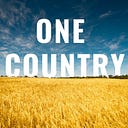New Analysis Reveals $1,382 “Tax” Rural Americans Pay Annually
The poverty rate in rural America is higher than it is in urban areas — 3.5 percent higher according to a 2018 Department of Agriculture report — and the median income of rural households is significantly lower than that of metropolitan ones. But these broad numbers only tell part of the economic story that rural Americans are living day-to-day.
Rural budgets start out limited by less access to economic opportunity, but to add insult to injury, rural Americans also end up spending more on key staples of modern life. This devastating one-two punch not only underscores the fundamental challenges facing rural communities, but it also puts a daily financial and psychological strain on rural families.
Rural Tax
There is a stealth penalty being levied on rural communities across the United States, a “rural tax” that compounds the challenges rural Americans are facing and adds fuel to the fire of their economic frustration. When the cost of certain basic needs — transportation, health care, energy, and food — are compared between the average rural and metropolitan households, residents outside of cities pay an extra $1,382 a year.
Methodology
To calculate the rural tax, we took two hypothetical households — one in a metropolitan area and one in a rural area — and put them on even financial footing by assuming they both made the median household income of $61,372 per year. We then looked at average annual expenditures across a group of basic goods and services, comparing the differences for metropolitan areas versus rural.
We found that even when holding incomes even (which is typically not the case) spending on transportation, health care, energy, and food were all higher and create more strain on the budget of a family of four in rural areas.
Basket of Household Expenses in Detail
Transportation: We all have somewhere to be, but rural Americans need to travel further — and spend more — than urbanites do to get there. According to the Bureau of Transportation Statistics, the average rural household spends $782 more each year on transportation costs than does the average urban household. Of course, some transportation costs are not easily quantifiable. The fact that rural households drive over 4,000 miles more each year than metropolitan residents add up in fuel and maintenance costs.
Health Care: Rural America already faces a crisis when it comes to health care access. The closure of rural hospitals and pharmacies means traveling further — which means more time and money spent — but premiums are also higher for rural Americans. According to data from the Bureau of Labor Statistics, rural households are expected to spend $477 more than metropolitan households each year for health insurance. Rural residents also spend more on drugs, medical supplies, and other medical services.
Energy: When it comes to energy — like natural gas and electricity for one’s home — the gap between rural and urban families is smaller, but it still accounts to $93 more each year that rural families pay.
Food: Groceries are another daily expense that, given their proximity to agricultural regions, you may assume rural households spend less for than urban ones do. Counterintuitively, food for the home spending totals nominally more for rural households each year: $30 more to be precise, according to a federal consumer expenditure survey.
The “rural tax” across these four daily basics amounts to over $1,300 each year. In this thought experiment, both our families are making $61,372 a year. In reality, the median rural household makes significantly less at $44,020 a year. The fewer dollars you have at the outset, the more significant each individual penny is. For rural Americans suffering from a lack of economic opportunity and higher levels of poverty, a rural tax of any amount is a burden.
Conclusion
This accounting is not exhaustive. And certainly, there are some areas, such as housing, where metropolitan expenses exceed rural ones. However, this snapshot does help to explain the economic reality of rural Americans and illustrates the need for a rural economic agenda, or an economic agenda that, at the very least, does not ignore the needs of rural communities.
While many conversations on rural poverty focus on overall income and earnings, they don’t investigate the extra expenses experienced by those living in areas with limited access to transportation, health care, energy, and food. Income is just the start. Leaders in Washington would be wise to pay closer attention to the nuances of the rural economy. It will take more than rural broadband to pull the American heartland, the deep south, and other rural communities across the United States out of the economic rut it finds itself in.
